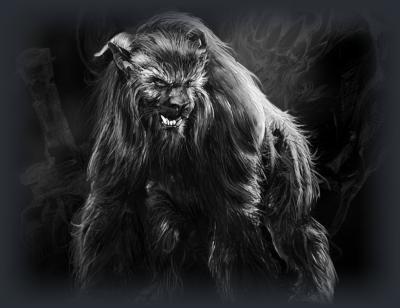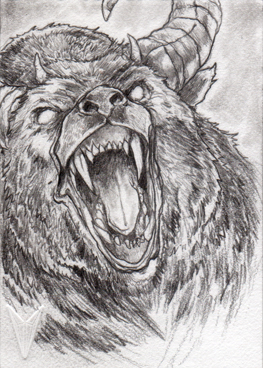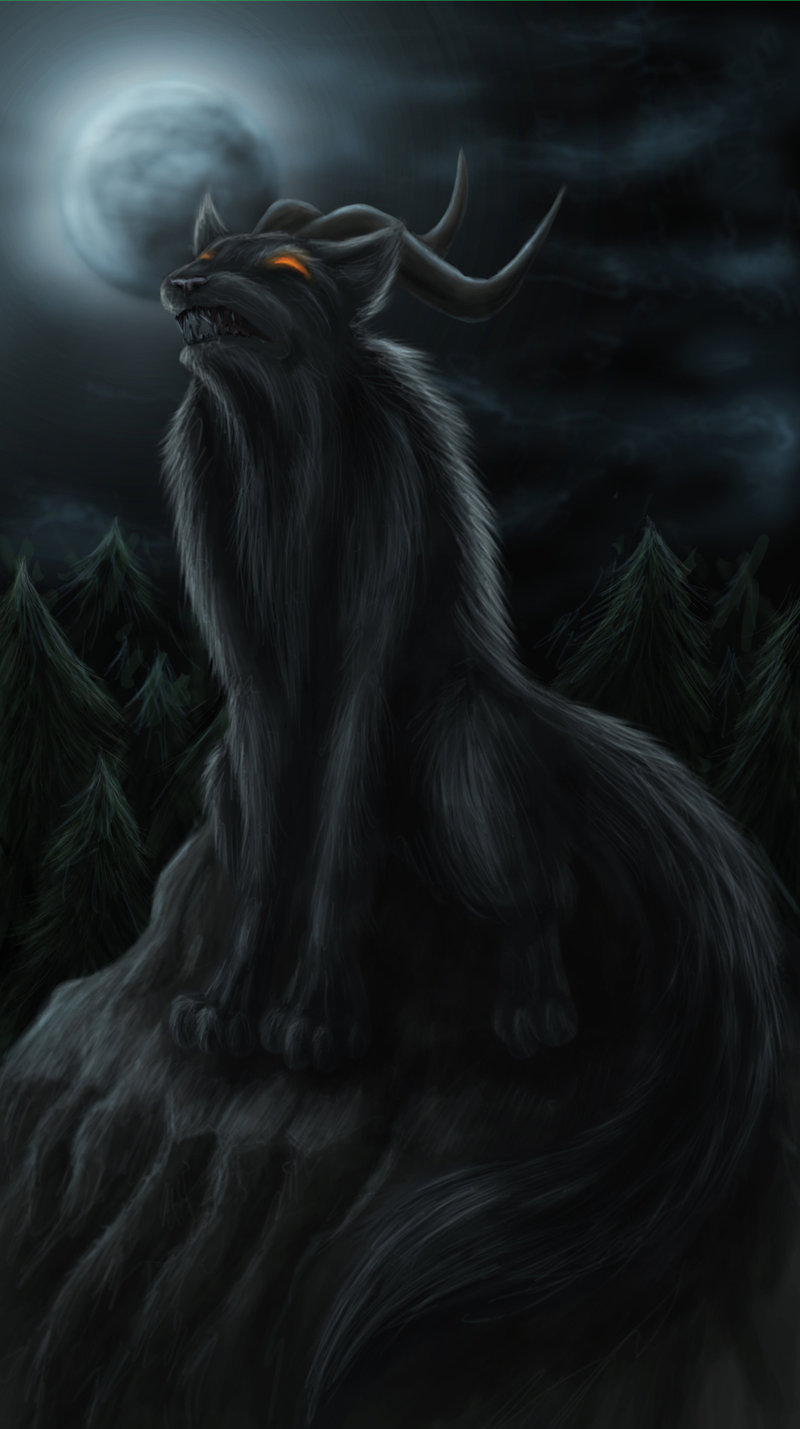
Ozark Howler
Do you believe in the Ozark Howler?
The Ozark Howler is a mysterious creature living deep in the woods of the Ozarks. Its territory extends from southern Missouri to northern Arkansas and sightings have even been recorded in Oklahoma and Texas. Of course it’s just a local legend… or is it?
The Ozark Howler, or the Ozark Black Howler, legend has been passed down for generations by locals who have heard things they could not describe, and have seen things that couldn’t be described as an animal that you would expect to find in the heart of the Ozark wilderness. Its frightening sound and eerie appearance has been seen in the more remote parts of the Missourian and Arkansan Ozarks and even farther west in Oklahoma and south in Texas.
It is typically described as being around the size of a bear, with a thick body, stocky legs, black shaggy hair, and having prominent horns. Most agree that it is either black or dark in color. Its cry is often described as being a combination of a wolf’s howl and an elk’s bugle. Skeptics claim that it’s an eastern cougar, a black bear, or some kind of wolf or feral hound. Sightings have been officially recorded since the 1950’s, though many Ozark families can pass on stories of their parents and grandparents experiencing the chill of seeing the Ozark Howler well before that time.
Between 2005 and 2010, the Howler (also called the Black Howler and the Devil Cat) was spotted several times. A family living north of Van Buren in the Boston Mountains of Crawford County set out trail cams after spotting what they believed was a cougar. The images they supplied to a Fort Smith television station appeared to show a big cat similar to a cougar (mountain lion).
The problem is that wildlife officials maintain there is not a breeding population of cougars left in Arkansas. They do concede that it is possible there might be individual big cats living in the mountains, pointing out they likely were once held as pets but escaped or were turned loose by their owners. (From Explore Southern History)
Clip from Travel Channel show “Legends of the Ozarks: A Search for the Ozark Howler”
The HowlThe howl, as you might expect, is the hallmark of the Ozark Howler. Its sound has been described as “very deep and guttural” as well as a “high-pitched howl.” Others have said that it’s “the most unearthly scream” and “half-human.” One of the most common descriptions of the sound is “like the screams of a woman.” Those who have heard the screams pierce the night never forget the chill that ran up their spine and the feeling of dread that washed over them.
Some claim that the sounds are made by animals commonly found in the region. They point to the screams and howls of animals like the Red Fox, Fisher Cat, and even fighting raccoons.
Listen to the scream of the Red Fox:
Click here to learn more about the Red Fox.
Listen to the sound of fighting Raccoons:
Click here to learn more about Raccoons.
Listen to the sound of the Fisher Cat:
Click here to learn more about Fisher Cats.
Listen to the sound of a Bull Elk bugle:
Click here to learn more about Elk.
Is it a Cù Sìth?Scottish, Irish, Welsh and English settlers homesteaded the Ozarks plateau in the mid to late 1800’s, and they brought with them their ancestral stories and mythologies. One such story was of the Cù Sìth, a mythological hound that is feared as a harbinger of death. The settlers believed the hound would come to bear away the soul of a person to the afterlife, similar to the Grim Reaper. The hounds of death went by other names, such as Bean Sidhe (Irish), Cú Sídhe (Irish), and Cŵn Annwn (Welsh).
According to Scottish folklore, the Cù-Sìth is said to be the size of a young bull with the appearance of a wolf. Its fur is shaggy, and usually cited as being dark green though sometimes white. Its tail is described as being long and either coiled up or plaited (braided). Its paws are described as being the width of a man’s hand.
The Cù-Sìth is thought to make its home in the clefts of rocks in the Highlands, and also to roam the moors and highlands.
According to legend, the creature was capable of hunting silently, but would occasionally let out three terrifying bays, and only three, that could be heard for miles by those listening for it, even far out at sea. Those who hear the baying of the Cù-Sìth must reach safety by the third bark or be overcome with terror to the point of death.
It was also said the baying was a warning to lock up nursing women lest the beast abduct them and take them to a fairy mound (Scottish Gaelic: sìthean, pl. sìtheanan) to supply milk for the children of the fae (daoine sìth).
In Wales, they were associated with migrating geese, supposedly because their honking in the night is reminiscent of barking dogs.
Hunting grounds for the Cŵn Annwn are said to include the mountain of Cadair Idris, where it is believed “the howling of these huge dogs foretold death to anyone who heard them”.
According to Welsh folklore, their growling is loudest when they are at a distance, and as they draw nearer, it grows softer and softer. Their coming is generally seen as a death portent.
Some people see a connection between the mythologies that came here with the settlers and the ancient stories of the Native Americans who inhabited the region. Natives told stories of saber tooth tigers that used the roam the land, though they have been gone for thousands of years. Combining the stories of the tigers and the settler’s tales of otherworldly creatures that scream and carry off the souls of the dead may have resulted in the Ozark Howler.
Activities - For children, parents, and educators:Does the Ozark Howler resemble a large cat like a panther or mountain lion? Or is it more goat-like with horns and shaggy fur? Do its eyes glow red or yellow? You’ve read the witness accounts and you know the legends, now it’s your turn to show us what you think the Ozark Howler looks like.
Click here to download or view the drawing guide. (PDF)
Click here to download or view the drawing guide.) (JPG
Submit Your picture using our Contact Us page.
Please provide the name of the artist, the teacger/parent name, and school/class name.


